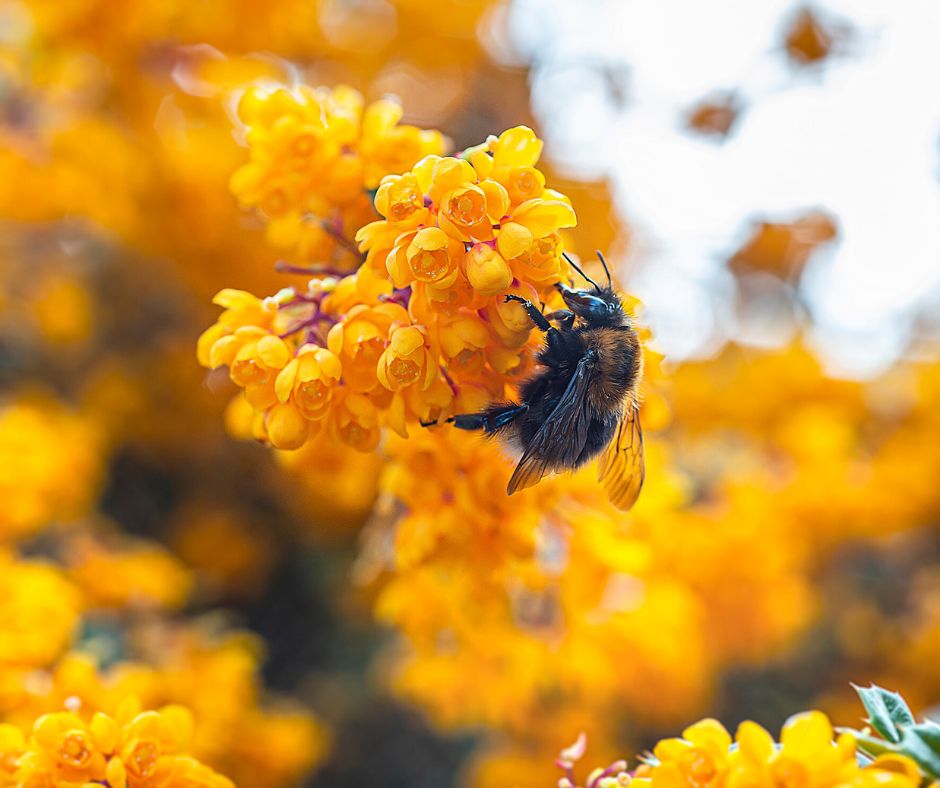Aberdeenshire Council supporting #NoMowMay initiative
Aberdeenshire Council is supporting Plantlife’s national No Mow May campaign in 2024 to encourage the growth of long grass and wildflowers that help to sustain our local pollinators and benefit wildlife.
The No Mow May campaign aligns with the council’s greenspace and biodiversity works as well as our commitments within our approved Pollinator Action Plan that commits at least 10% of managed public greenspace to be enhanced for pollinators and biodiversity.
No Mow May encourages everyone to “let it grow” in their garden and greenspaces, providing a feast for pollinators and even locking away atmospheric carbon below ground.
It is the second year in a row that the council is supporting the campaign and will “let it grow” in prominent greenspaces across Aberdeenshire to let lawns flower, support the pollinators, and monitor which species are present.
Councillor Alan Turner, chair of the council’s Infrastructure Services Committee (ISC), said: “These little insects make all the difference by helping to pollinate local plant life, which supports an increase in vegetation and, in turn, helps to absorb carbon dioxide from our atmosphere.
“Aberdeenshire’s landscapes and habitats would also look quite different without our pollinators there to fertilise crops, provide honey, pollinate our gardens and greenspaces, while helping to further beautify our countryside.”
ISC vice chair Councillor Isobel Davidson said: “No Mow May really highlights that small changes in behaviour can lead to large positive improvements to our region and local wildlife.
“By providing good habitats for pollinators in our gardens and greenspaces across the growing season we actually support a wide range of animals, from invertebrates to birds and small mammals that feed on insects and seeds.”
Edges will continue to be maintained along paths and fences.
To survive and flourish, pollinating insects require well connected sources of pollen and nectar throughout the flowering season.
The UK has lost approximately 97% of its flower-rich meadows since the 1930’s and, with them, vital food needed by pollinators such as bees and butterflies.
With over 20 million gardens in the UK, even the smallest grassy patches add up to a significant proportion of land that, if managed properly, can deliver enormous gains for nature, communities, and the climate.
Learn more about...
-
Biodiversity and pollinators within Aberdeenshire https://www.aberdeenshire.gov.uk/environment/natural-heritage/biodiversity/
A list of the prominent greenspaces selected for No Mow May:
-
A947 to Bridge Junction
-
Aboyne – A93
-
Alford – Aberdeen Road and Gordon Place
-
Banchory – Silverbank Park and Forestside Road
-
Banff - Battery Green
-
Broadsea
-
Cairnbulg
-
Crimond - Logie Road, St Fergus Paddock, and Keith Gardens
-
Daviot – Church Car Park
-
Drumoak - A93
-
Ellon – Castlepark Community Playpark, Glebes, Snipe St, and Western Avenue
-
Fetterangus – Chalmers Place
-
Fettercairn – Garroll Place
-
Fraserburgh - James Ramsay Park
-
Fyvie – Shieling Tor
-
Gardenstown Village - Entrance Boat
-
Howe of Gellymill
-
Inverurie – Conglass Road, North Street, and Nether Devah Way
-
Kemnay – Glebe Road, Kembhill Park, and Bremner Way
-
Laurencekirk - Kirkburn
-
Macduff - Buchan St and Union Rd
-
Mintlaw – Macbi
-
Old Deer - south entrance and rec ground and bridge
-
Oldmeldrum – Rec Ground
-
Peterhead – Links and Strawberry Park
-
Pitmedden – Laurel Terrace and Road Verge
-
Pitsligo – School Street
-
Portlethen – Easter Drive, Bosewell Road, Broomfield Park, and several moss areas
-
Portsoy - Wally Green
-
Potterton – Panmure Way
-
Sandhaven
-
Sandyhill Junction/Deveron Terrace
-
Stonehaven – Forest Park, Farrochie Road
-
Strichen – Market Stance
-
Turriff – Johnston Walk, Sunnyhill Place, and Market Street
-
Westhill – Hilltop Crescent, Barringer Lane

